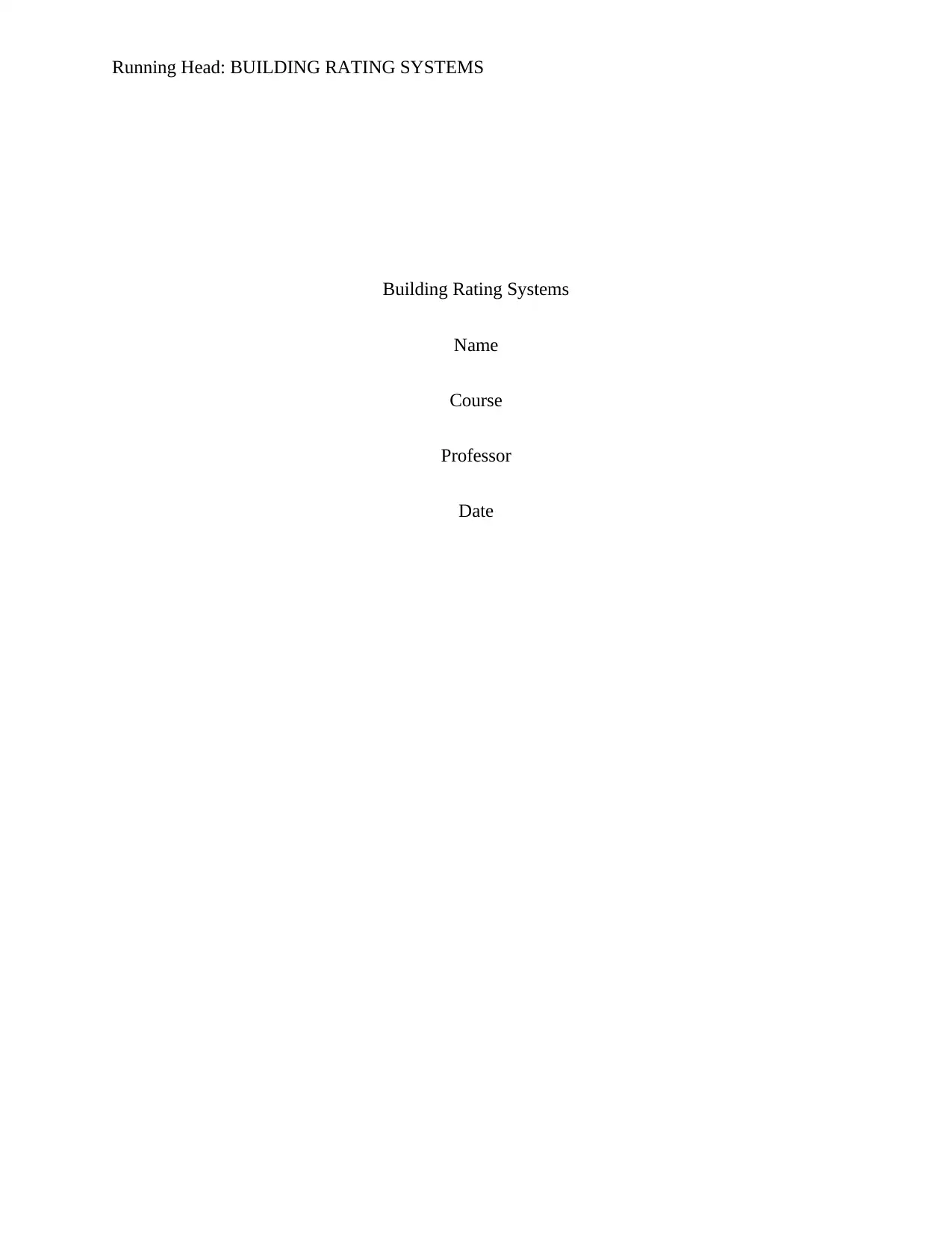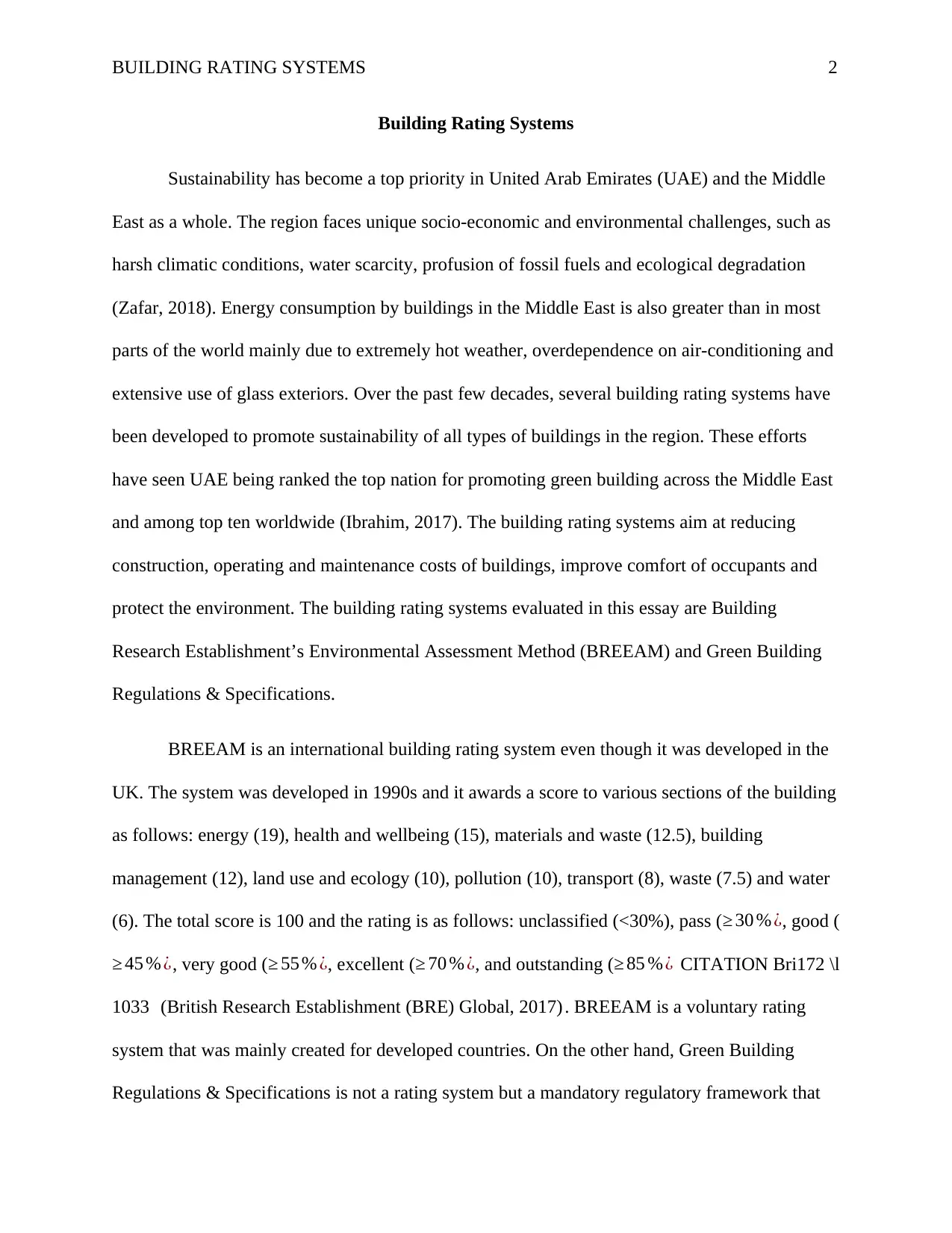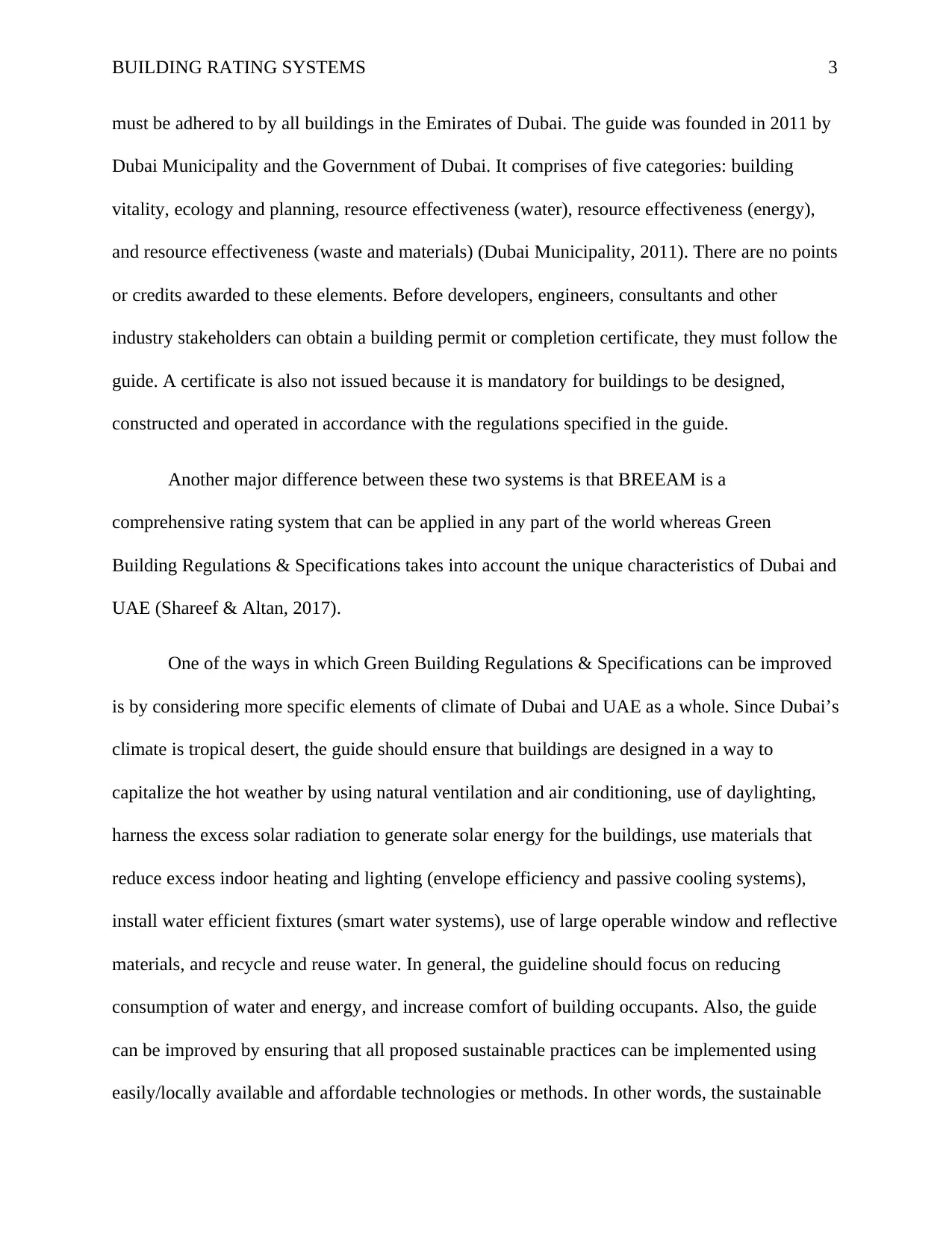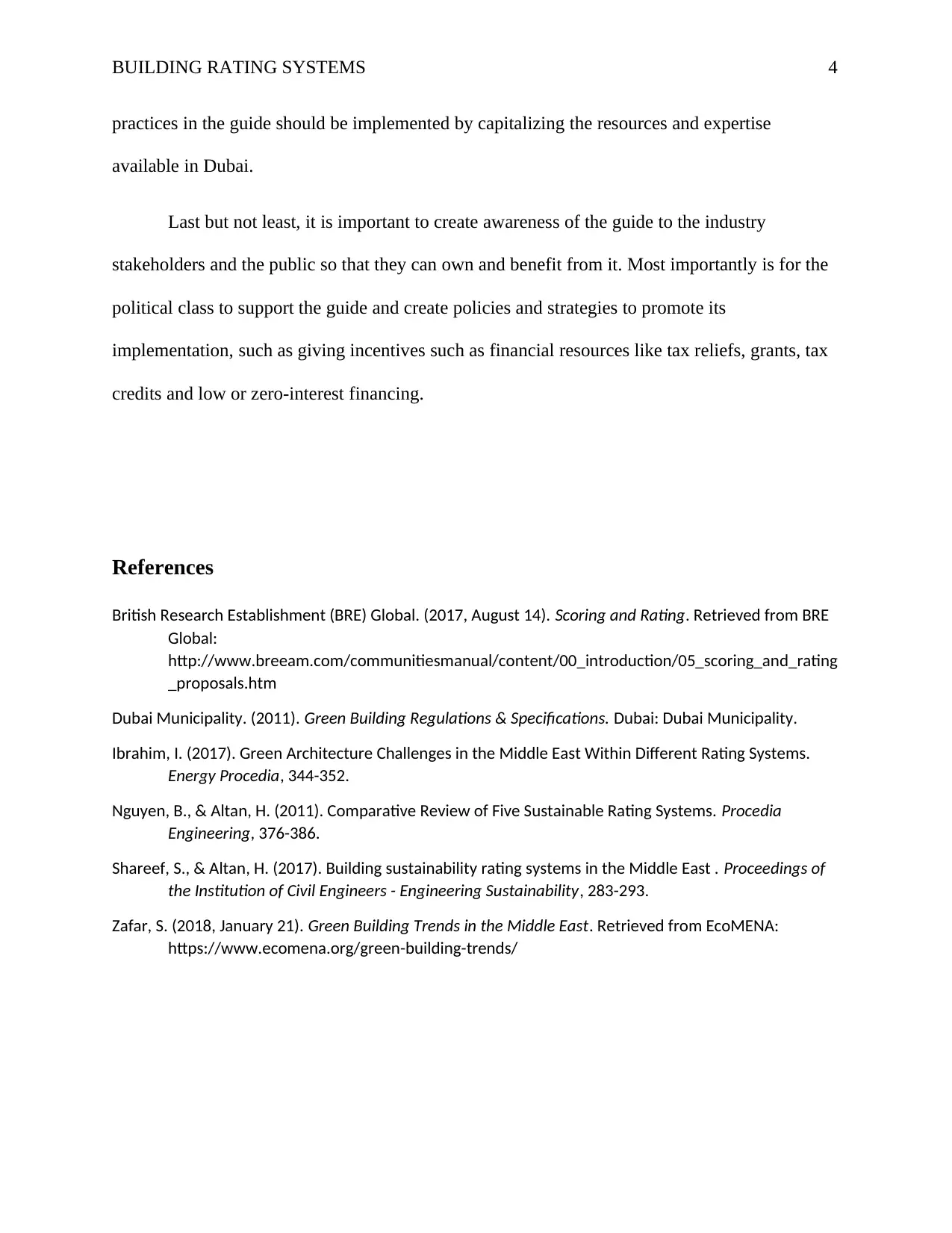BREEAM vs. Green Building Regulations & Specifications Report
VerifiedAdded on 2021/05/31
|4
|989
|47
Report
AI Summary
This report examines building rating systems, specifically comparing the Building Research Establishment’s Environmental Assessment Method (BREEAM) and the Green Building Regulations & Specifications used in Dubai, UAE. The report highlights the importance of sustainability in the Middle East, addressing environmental challenges and the high energy consumption of buildings. It details BREEAM's international application and scoring system, contrasting it with the mandatory, region-specific Green Building Regulations & Specifications. The analysis includes a comparison of their approaches, focusing on the differences in their frameworks and the unique characteristics of Dubai's climate. The report suggests improvements to the Green Building Regulations, such as incorporating climate-specific elements, utilizing local resources, and increasing stakeholder awareness. It concludes by emphasizing the need for governmental support and incentives to promote the implementation of sustainable building practices.
1 out of 4








![[object Object]](/_next/static/media/star-bottom.7253800d.svg)